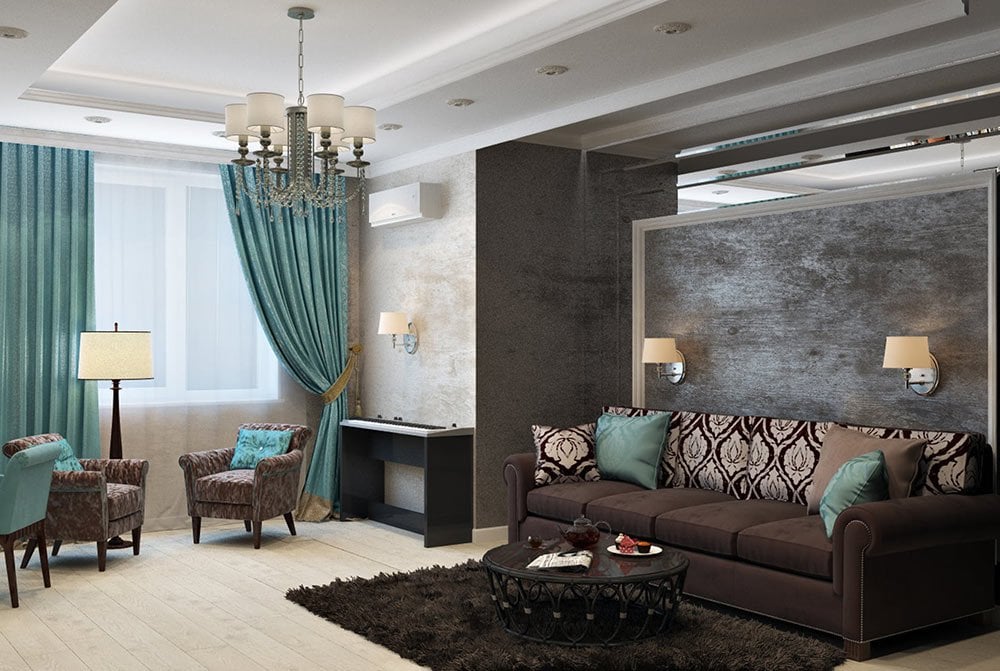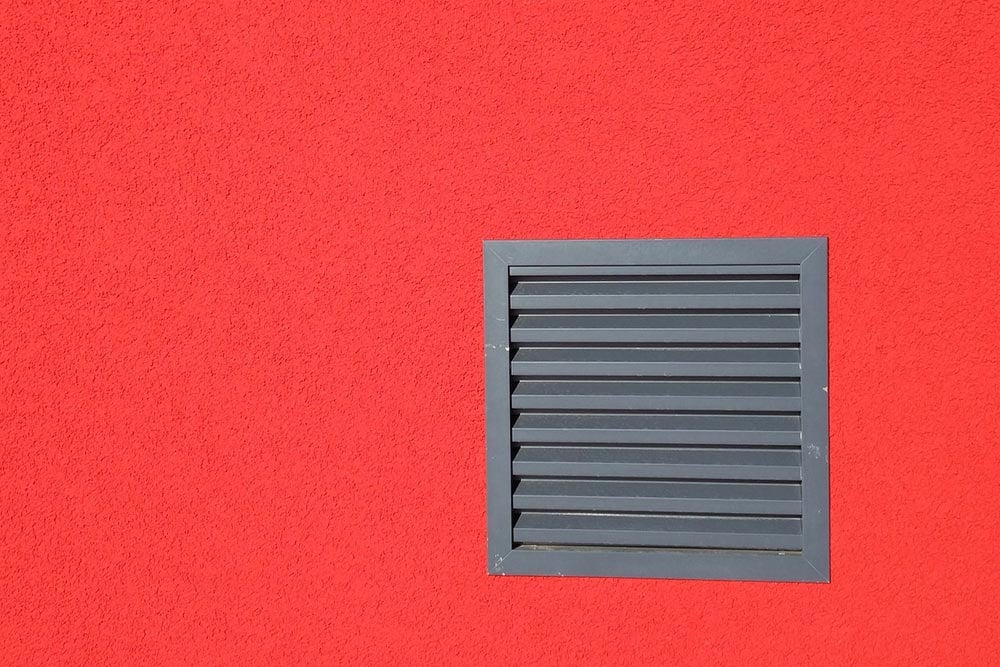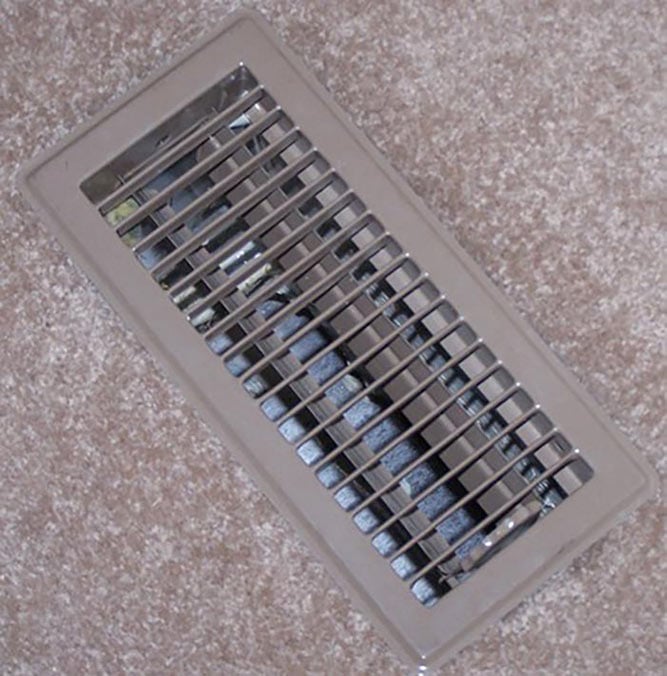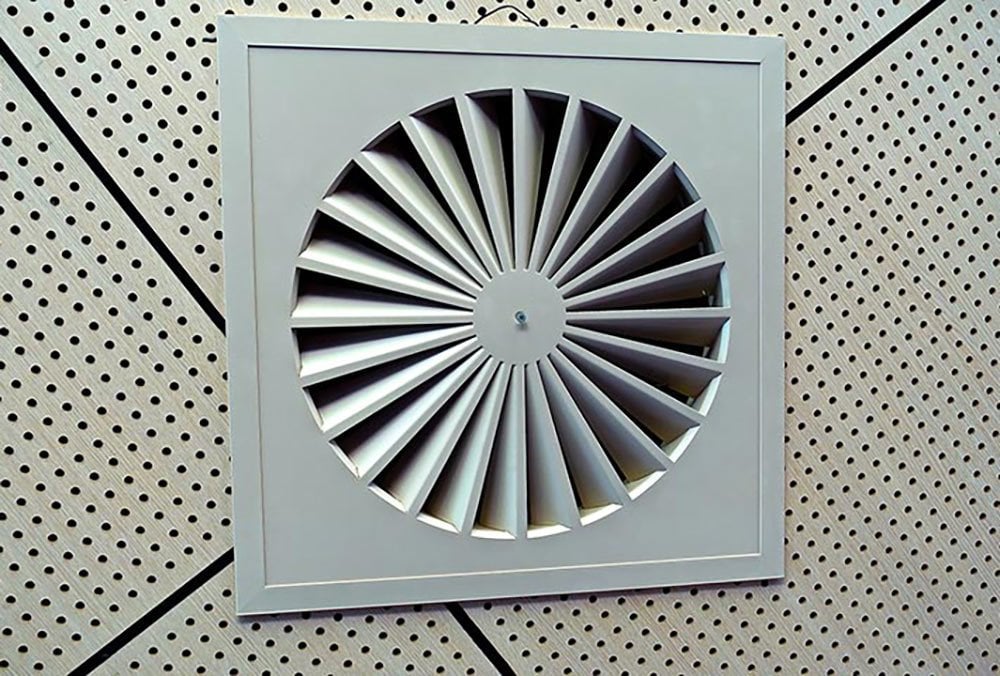Grilles, Registers And Diffusers, What Is The Difference?
Yes, we all know ventilation is essential, but what could go wrong with poor ventilation? Well, let's say the air within indoor areas may not be as clean as most presumed. As more people invest in many heating or cooling equipment, most homes and estate owners would want an indoor space that's efficiently sealed to avoid leaking of the air and preserve the energy used. However, a full sealing also means that pollutants generated from inside and humidity have nowhere to escape.
 An air conditioner installed in a living room wall
An air conditioner installed in a living room wall
Most indoor spaces contain contaminants like dust, lead, mold, radon, pests, carbon monoxide, pet dander, and second-hand smoke. What's more, with no air circulation, humidity builds up, resulting in a mixed bag of cooled/warm air that is stuffy and contaminated, and probably doing more damage to your body as you breathe. However, proper ventilation, be it mechanical or natural, can aid in curing all these. A well-planned ventilation system will be able to replace the stale, polluted air with cleaner ones.
The two ventilation methods include:
- Natural Ventilation: Uses natural air circulation through windows, solar chimneys, small gaps/cracks, and trickle vents around the house.
- Mechanical Ventilation: Uses systems and devices to replace the air through fans, ducts, intake/exhaust vents, and air filters.
 An open sliding door that allows air from inside to circulate outside.
An open sliding door that allows air from inside to circulate outside.
How a cover helps
As ventilation requires a certain degree of control over the air intake/exhaust rate and direction in enclosed spaces, to balance out the air, a vent cover performs that function. A vent cover also serves as an aesthetic seal over the gaping holes and outlets for ventilation, allowing ventilation to appear more seamless. The three main cover types are mostly grilles, registers, and diffusers.
Grilles
The least complex of the three, a grille's primary function is as a cover to allow air to pass in and out through it. Grilles are the only of the three options that are suitable for both air intake and air exhaust outlets from indoor space. Considering grilles do not involve any moving components or dampers, it's also one of the easiest to maintain.
 A ventilation grille mounted on a red wall.
A ventilation grille mounted on a red wall.
However, what the grille has in simplicity, is compromised in function. Due to most grilles being static covers, a grille will not be suitable if the cover needs to be able to adjust airflow direction or the amount flowing in and out. A grille does come in handy for when you want a simple cover to extract air in and out unobstructed. Grilles also have more freedom in their placements at any spots, which generally need air to flow in and out. Some usual installation spots include floor/wall dividers between rooms/floors to allow air from both spaces to circulate from one area to another and vice versa.
Registers
In simple terms, an air register is the same as a grille, but with adjustable dampers in it. Unlike grilles, which can be for both intake and release of air in a room, a register only serves the latter. An air register usually is used with air supply outlets feeding air into indoor spaces. The dampers help to control the airflow direction or shut off the flow, similar to the adjustable vents of a car's aircon outlet.
 A register with adjustable dampers.
A register with adjustable dampers.
Most of the time, many aircon ducts and mechanical ventilation inlets mounted in the walls use registers for control over where the air is going. Some homes, hotels or malls would opt for grilles with slots set at an angle, to serve primary airflow directing but does not offer the control flexibility of regular registers.
Diffusers
While similar to registers, a diffuser differs in terms of the airflow direction variability. A diffuser and its dampers are designed facing all-round, rather than a register's single air direction. Many diffusers are found on ceilings, often covering an air-con or air release outlet. Diffusers do also vary the most, amongst the three, in design.
 A ceiling-mounted air diffuser with a spiral patterned vent slots
A ceiling-mounted air diffuser with a spiral patterned vent slots
Most diffusers come in square or circular shape with vents, designed to match the diffuser's shape, facing different directions. There are some unique diffuser designs such as eyeball diffusers, whereby the diffuser consists of a sphere within a holder, that can be rolled to point the sphere air opening in any direction. A diffuser is effective when needing to distribute air evenly around a room or in specific paths at once. However, the pattern and airflow path depend on the damper's design and position.
Right cover, right ventilation desires
With each covering a particular function, some consideration before you decide would be needed to find the right ventilation cover. If simplicity is what you're after, a grille would be suitable. Registers are perfect for controlled ventilation purposes. Lastly, diffusers for a multi-directional air release. With the right planning and product selection, ventilation could save indoor users from many air pollutant related illnesses or sneezes.
https://insights.jonite.com/grilles-registers-and-diffusers-what-is-the-difference



